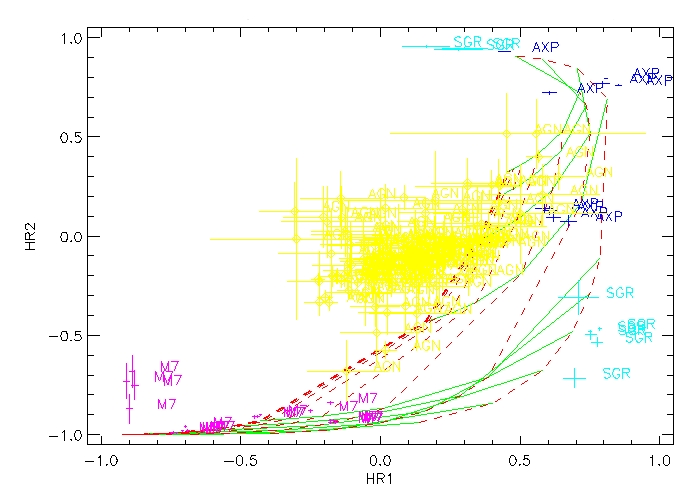Search for new neutron stars
Neutron stars in general can be detected in several wavelengths ranging from radio to the Gamma-ray regime. While for example X-ray emission from Neutron stars can either come directly from the surface (observed as thermal radiation) or from above the magnetosphere (as non-thermal radiation) the detected high energy emission can originates from above the surface. Regarding the non-thermal radiation there are several competing emission models. It is thus a crucial point to carry out multi-wavelength observations in order to be able to discriminate between existing competing emission models.
The launch of the FERMI Gamma-ray Space Telescope has led us inot a new era of high-energy astrophysics as the sensitivity of its Large Area Telescope(LAT) in much higher than that of its predecessor, the Energetic Compton Gamma-Ray Observatory. This enables very efficient searches for gamma-ray pulsars. Hence we are currently conducting an identification campaign to find new gamma-ray pulsars as well as counterparts to newly detected gamma-ray pulsars. This search has already been successful.
See for example Trepl et al. 2010, MNRAS 405, 1339 were we describe the X-ray and gamma-ray emission properties of the newly found gamma-ray pulsar PSR J2021+4026. This pulsar turns out to be quiet in radio which places it into the group of high energy radio-quiet pulsars (i.e. Geminga-like pulsars).
Search for new neutron star candidates in X-ray
Finding new neutron stars is a crucial topic as the expected total number of neutron stars in our Galaxy was predicted to be ~ 1 billion of which isolated NS should form the majority. Until 2011 there are ~ 2000 known radio pulsars and only seven known isolated thermally emitting NS (called the "Magnificent Seven", M7). Since the discovery of the first M7 (RX J1856.5-3754) in 1996 the search for more thermal NS is an ongoing process. Those seven objects have been recognized by their high X-ray to optical flux ratio and their rather soft X-ray emission represented by low X-ray hardness ratios.
The XMM-Newton serendipitous source catalog provides an excellent database to look for new candidate neutron stars as it has now over 300000 sources listed. We therefore started to look for objects with a similar soft thermal X-ray spectrum represented by low hardness ratios among those sources.
An X-ray color-color grid overplotted on a hardness ratio diagram has been created for this purpose and is used to identify new candidate neutron stars in the XMM catalog.

Shown is an X-ray color-color diagram overplotted with lines of constant interstellar absorption (green) and lines of constant temperature (red). In addition typical types of neutron stars (AXPs, SGRs and the magnificent seven) and active galactic nuclei (AGNs in yellow) are shown.
It is clear that many candidates can be missed, for example when they are harbored in binary or multiple star systems like for example high mass X-ray binaries.
In order to compensate for this biasing problem we have started a search for X-ray pulsations from all X-ray sources near or identified with galactic OB stars, in search of non-interacting (and hence effectively isolated) neutron stars that remain bound in a stellar system following the supernova.
